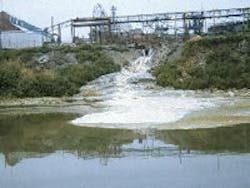Industrial Pollution: New European Register Adopted
The European Commission welcomes the first-reading agreement between the European Parliament and the Council on the establishment of a European Release and Transfer Register (PRTR), as required by a UN protocol. The European PRTR will be Internet-based and hold a variety of data on industrial pollution, providing the public with information about the quality of the environment in their neighborhoods and elsewhere in Europe. It will be a more comprehensive version of the award-winning European Pollutant Emission Register (EPER). EPER was launched in February 2004 and recorded more than 230,000 visits in its first year of operation.
Environment Commissioner Stavros Dimas said: “The speedy agreement between the Parliament and Council on the establishment of the European PRTR shows the importance the EU attaches to this instrument.” He further said that the success of EPER proves that citizens are keen to know how clean or polluted their environment is, and that this kind of information enables them to take action if they are not satisfied.
What exactly will the European PRTR be?
The European PRTR should go online in 2009 and will then replace EPER. Its first reporting year will be 2007. Just like EPER, the European PRTR will provide information about releases of pollutants from specific industrial facilities and activities, and by country.
The present EPER reports on 50 substances emitted to air and water from 56 industrial activities. It is managed jointly by the European Commission and the European Environment Agency. In April 2005, EPER won an award for best new electronic information source in 2004 at European level.
The European PRTR will report on more than 91 substances released to air, water and land from 65 activities. It will also have information on what the industrial installations do with their waste and waste water. The reporting cycle will be annual instead of every three years. What is more, the European PRTR will also compile reporting of pollution from diffuse sources such as road traffic, aviation, shipping and agriculture. After its initial establishment, citizens will have a say in how it should be developed further.
Where does the European PRTR come from?
On May 21, 2003, the EU signed the Protocol on Pollutant Release and Transfer Registers, which was negotiated under the auspices of the 55-member United Nations Economic Commission for Europe (UN-ECE). During the negotiations, EPER - whose establishment and design had already been decided then—served as a model. In order to allow the EU to ratify and implement the Protocol, EPER has to be transformed into a PRTR. This is why the Commission adopted on October 7, 2004, a proposal for a Regulation establishing the European PRTR.
Adoption procedure
The European Parliament gave the proposal a positive vote today. The Council will formally adopt the proposal without further discussion in any upcoming Council meeting. The Regulation will then become binding when it is published in the Official Journal.
Further information:
The website of EPER and further background information can be found at: http://www.eper.cec.eu.int.
An 8-min. video in broadcast quality, “EPER: industry pollution online”, is available to TV stations free of charge and copyright at: http://www.tvlink.org/vnr.cfm?vidID=88.
Source: EUROPA
